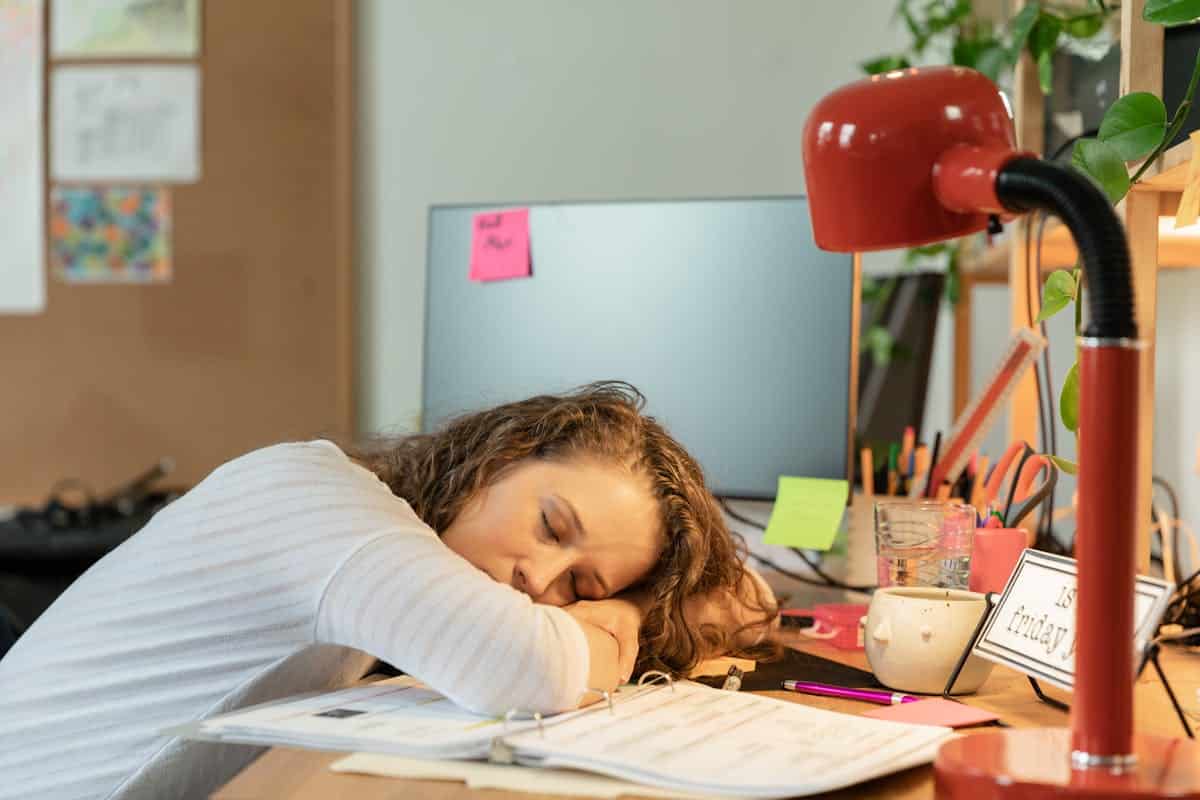Table of Contents
Lunchtime can feel like a double-edged sword. You get that satisfying break from the grind, but not long after, the energy you counted on seems to vanish. Suddenly your desk feels like quicksand, your concentration drifts, and even simple tasks take twice as long. The post-lunch slump is so common it’s practically a workplace rite of passage, but that doesn’t mean you’re stuck with it. With the right mix of movement, food choices, and small habit shifts, those dragging hours can turn into some of your most productive.
A Slump Written Into the Schedule
The hours after lunch can feel like an obstacle course, the kind where your body has decided to betray you. Your brain slows down, your eyelids grow heavier, and suddenly even the smallest tasks stretch out like marathons. This isn’t laziness and it’s not just you—it’s biology mixed with routine. Blood sugar dips, circadian rhythms nudge you toward drowsiness, and the comfort of a meal only adds to the temptation to power down. The good news is that this daily nosedive isn’t unavoidable. With the right habits, you can reshape those afternoon hours into something far more productive, or at least more bearable.
The Role of Movement and Oxygen
It’s easy to think the antidote is more caffeine, but your body often needs air and circulation more than another espresso. A brisk walk outside does more than just stretch your legs; it gives your brain the oxygen and blood flow it’s craving. People underestimate how much a change of scenery jolts you awake. If you can’t step outside, even pacing while taking a phone call or doing a few stretches by your desk interrupts the inertia that fuels fatigue. Some find that even two or three minutes of concentrated deep breathing resets focus. Energy doesn’t only come in cans or cups; sometimes it’s as simple as reminding your body to wake itself up.
Smart Fuel Instead of Sugar Spikes
Lunch sets the tone for your afternoon. A heavy, greasy meal makes the slump inevitable because your body prioritizes digestion over alertness. Lean proteins, vegetables, and complex carbs keep energy steady instead of yanking it up and dropping it again. For those who like a small push, chewable energy tablets can offer a cleaner lift than reaching for soda or another coffee. They work because they’re measured, predictable, and far less likely to wreck your stomach the way highly sweetened drinks often do. A piece of fruit or a handful of nuts also sustains longer than something quick and sugary. The real trick is consistency: eat like you want energy later, not just comfort now.
Snacks That Don’t Sabotage
The temptation to rummage for something sweet in the middle of a dragging afternoon is strong. The problem is that while candy treats can spark a brief rush, the rebound crash comes just as fast, often leaving you more sluggish than before. A smarter play is to channel that craving into something that delivers slow-burn fuel. Greek yogurt with berries, whole-grain crackers with cheese, or even dark chocolate in moderation scratches the itch without tanking your focus. If you genuinely love sweets, the answer isn’t to deny yourself forever, but to pair them with protein or fiber so the sugar doesn’t act alone. You’ll feel satisfied and still functional, which is the whole point.
Light, Rhythm, and the Mental Reset
Circadian rhythms aren’t just about bedtime; they dictate your energy flow all day. Exposure to natural light in the afternoon can keep drowsiness at bay. Positioning your workspace near a window or stepping outside for ten minutes makes a bigger difference than most realize. Mental rhythm matters too. Breaking your day into focused bursts with short pauses in between is far more effective than trying to grind endlessly. Instead of forcing yourself through a fog, shift gears for a moment—listen to music, tackle a quick chore, or chat with a colleague. These resets keep monotony from weighing you down and stop fatigue from building into something unshakable.
Harnessing Rest Without Falling Asleep
Naps get a bad reputation in professional culture, but a quick reset doesn’t have to mean curling up for an hour. A 10-to-15-minute power nap, if your environment allows it, restores alertness without the grogginess of deeper sleep. If napping isn’t an option, techniques like progressive muscle relaxation or even closing your eyes and practicing visualization can mimic the restorative effects. The point isn’t to knock yourself out—it’s to hit pause on the overstimulation that builds throughout the day. By giving your body and brain a momentary break, you return sharper and far more capable of carrying through the rest of the afternoon.
A Fresh Look at Afternoon Energy
The post-lunch slump isn’t destiny, it’s a signal. Your body is telling you how it responds to food, environment, and habits. You can listen to it without surrendering to it. Small changes in how you move, what you eat, and how you structure your time keep those hours from being wasted. Instead of seeing the slump as an immovable wall, treat it as a reminder to recalibrate. When you do, the hours between lunch and evening stop being a drag and start becoming an opportunity. The day feels longer, lighter, and a lot more within your control.


